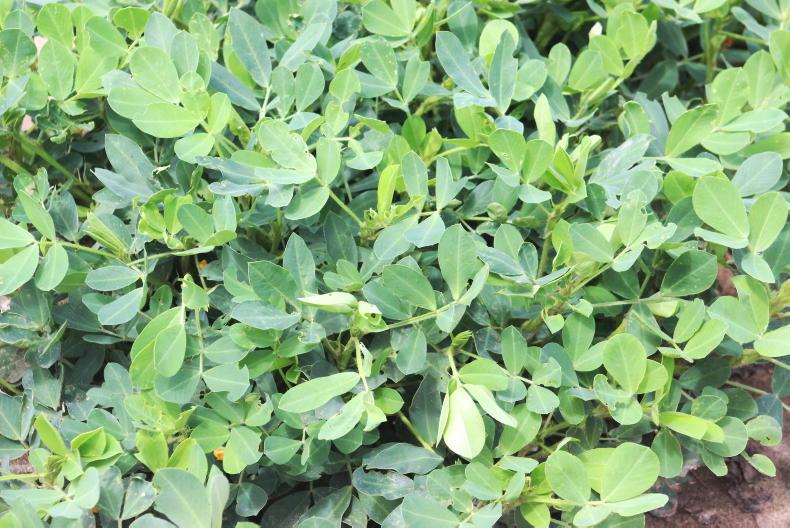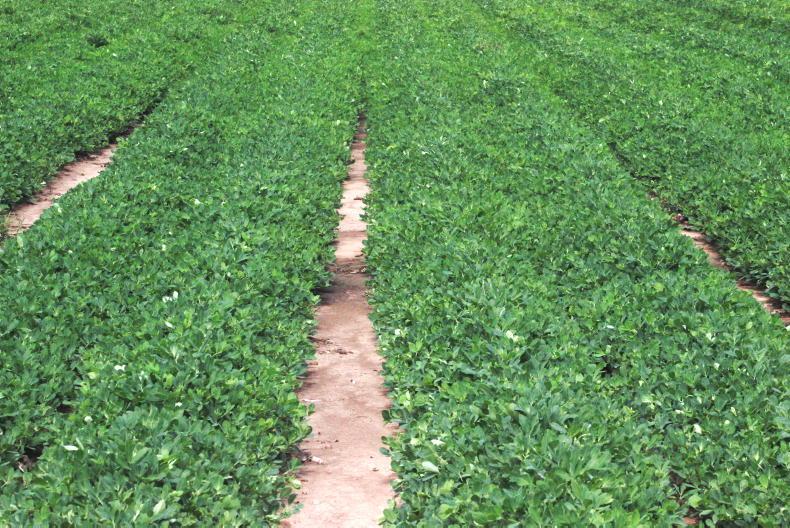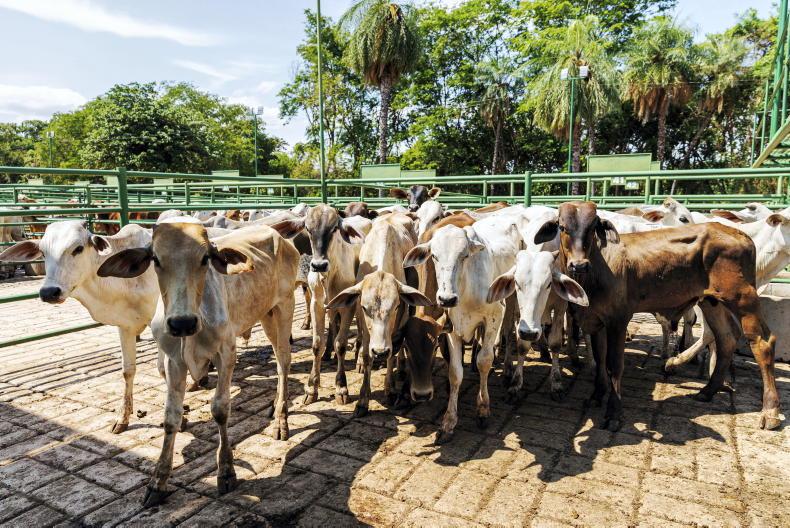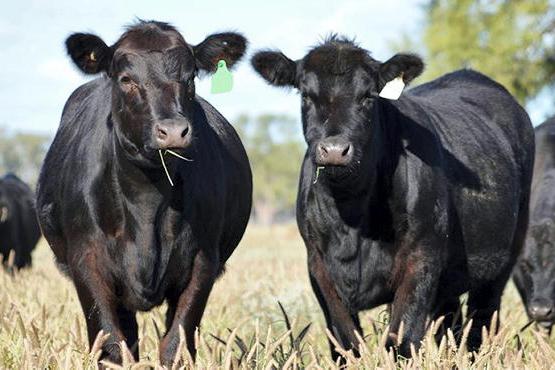Farming close to the coast south of Bundaberg in Queensland (QLD), Jack and Chris Russo run the Cruso Industries family business.
QLD has long been associated with sugar cane production and this farm used to be a big producer of that crop.
However, falling profitability has resulted in substantial acreage decline in this traditional area where the local sugar processor in Bundaberg finds a home for some of its molasses for the production of rum in the same town.
The local plant used to produce up on 1.5Mt of sugar, but that is now down to 1Mt and lower.

Jack Russo of Cruso Industries.
The Russos told us that acreage is leaking to other crops and sugar cane is now mainly grown on the poorest land, which might not suit higher-value higher-cost crops.
When ITLUS visited in January 2020, the price of sugar was 14.5cents/lb.
Jack said that the cost of production is put at 14.0c/lb, but it had been 12c/lb in the previous season.
Yields were also hit by the variable weather conditions and the frequent drought and that did not help the crop.
He also told us about the increasing cost of electricity (up 300% in recent years) and diesel at the time.
However, the cost of power would be reduced if the region is given a drought designation status, he said.

Peanut or groudnut plant.
Chris told us that the normal average rainfall level in the area is 1,400mm per annum, but that this was down to 200mm in 2019.
The area had obviously suffered some serious fire damage before we arrived, but after we got there, the land was well soaked.
Peanuts for profit
Given the quality of their land and the falling profitability of cane, the Russos looked at alternative crops and moved to legume production some years ago, specifically peanuts.
Also known as ground nuts, this crop more resembles potatoes than beans.

An upturned peanut plant showing the 'groundnuts' growing as storage organs on the plant roots.
The nuts grow in the soil covered by their casing, which we call monkey nuts when they come unthreshed.
The Russos explained that they are getting good returns from the crop.
Peanuts are an annual legume crop, which are grown in a six- or seven-year rotation, so they depend on having other viable annual crops also.
Short growing season
The crop generally has a quick turnaround from planting to harvest, which is generally only a 25-week growing season in the QLD heat and humidity.
They grow a low-bush variety and rust tends to be a major challenge.
Quite like potatoes here, the crops are sprayed every 10 days with a Bravo-plus-azoxystrobin combination, normally about 14 times per season.
Interestingly, spraying is done with 400 l/ha of water at 10km/h and 6.5 bar pressure (94 pounds/square inch or 648 kilopascals), so it would be a drifty business.
Wilting
The nut crop is planted in September and harvested around March, but harvesting can be a challenge.
Harvest requires that the nuts be dug up and left on the ground to dry out for seven to 10 days.
The foliage will normally dry out and the haulms can be baled up and sold for stock feed.
Jack said that the crop leaves more nitrogen in the soil for the following crop than soya beans.
The challenge is that there must be no rain on the crop during the drying out process.
The nuts can be harvested (lifted) at from 12% to 22% moisture and 8% moisture is a dry nut.
They hope to average about 6t/ha of nuts, but this can range from 5t to 7t/ha generally.
The normal price for the nuts is AUS$1,000 to $1,100/t (€640 to €700/t), but this can be as low as $400/t (€255/t).
Production cost is put at $1,000/ha to $1,200/ha (€640 to €770/ha), so there is reasonable potential for profit.
Farming close to the coast south of Bundaberg in Queensland (QLD), Jack and Chris Russo run the Cruso Industries family business.
QLD has long been associated with sugar cane production and this farm used to be a big producer of that crop.
However, falling profitability has resulted in substantial acreage decline in this traditional area where the local sugar processor in Bundaberg finds a home for some of its molasses for the production of rum in the same town.
The local plant used to produce up on 1.5Mt of sugar, but that is now down to 1Mt and lower.

Jack Russo of Cruso Industries.
The Russos told us that acreage is leaking to other crops and sugar cane is now mainly grown on the poorest land, which might not suit higher-value higher-cost crops.
When ITLUS visited in January 2020, the price of sugar was 14.5cents/lb.
Jack said that the cost of production is put at 14.0c/lb, but it had been 12c/lb in the previous season.
Yields were also hit by the variable weather conditions and the frequent drought and that did not help the crop.
He also told us about the increasing cost of electricity (up 300% in recent years) and diesel at the time.
However, the cost of power would be reduced if the region is given a drought designation status, he said.

Peanut or groudnut plant.
Chris told us that the normal average rainfall level in the area is 1,400mm per annum, but that this was down to 200mm in 2019.
The area had obviously suffered some serious fire damage before we arrived, but after we got there, the land was well soaked.
Peanuts for profit
Given the quality of their land and the falling profitability of cane, the Russos looked at alternative crops and moved to legume production some years ago, specifically peanuts.
Also known as ground nuts, this crop more resembles potatoes than beans.

An upturned peanut plant showing the 'groundnuts' growing as storage organs on the plant roots.
The nuts grow in the soil covered by their casing, which we call monkey nuts when they come unthreshed.
The Russos explained that they are getting good returns from the crop.
Peanuts are an annual legume crop, which are grown in a six- or seven-year rotation, so they depend on having other viable annual crops also.
Short growing season
The crop generally has a quick turnaround from planting to harvest, which is generally only a 25-week growing season in the QLD heat and humidity.
They grow a low-bush variety and rust tends to be a major challenge.
Quite like potatoes here, the crops are sprayed every 10 days with a Bravo-plus-azoxystrobin combination, normally about 14 times per season.
Interestingly, spraying is done with 400 l/ha of water at 10km/h and 6.5 bar pressure (94 pounds/square inch or 648 kilopascals), so it would be a drifty business.
Wilting
The nut crop is planted in September and harvested around March, but harvesting can be a challenge.
Harvest requires that the nuts be dug up and left on the ground to dry out for seven to 10 days.
The foliage will normally dry out and the haulms can be baled up and sold for stock feed.
Jack said that the crop leaves more nitrogen in the soil for the following crop than soya beans.
The challenge is that there must be no rain on the crop during the drying out process.
The nuts can be harvested (lifted) at from 12% to 22% moisture and 8% moisture is a dry nut.
They hope to average about 6t/ha of nuts, but this can range from 5t to 7t/ha generally.
The normal price for the nuts is AUS$1,000 to $1,100/t (€640 to €700/t), but this can be as low as $400/t (€255/t).
Production cost is put at $1,000/ha to $1,200/ha (€640 to €770/ha), so there is reasonable potential for profit.













SHARING OPTIONS